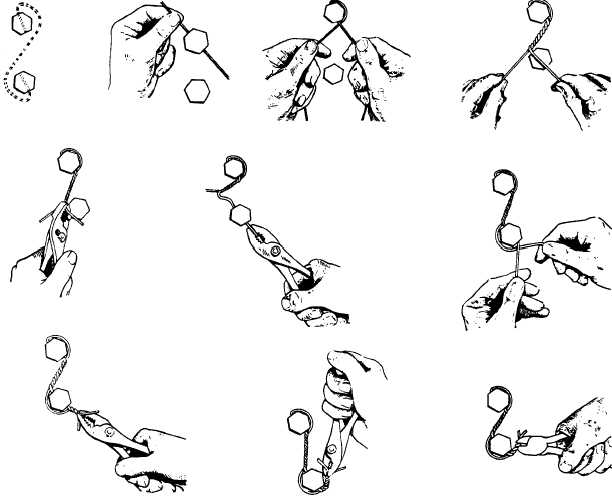When you perform an inspection, both bonding
connections and safetying devices must be inspected
with great care.
Q5-10.
What manual should you consult to find
correct
replacement
wires
for
a
given
aircraft?
SAFETY METHODS
LEARNING OBJECTIVE:
Recognize the
procedures for the safetying of fasteners and
electrical system hardware.
Safetying is a process of securing all aircraft bolts,
nuts, capscrews, studs, and other fasteners. Safetying
prevents the fasteners from working loose due to
vibration. Loose bolts, nuts, or screws can ruin engines
or cause parts of the aircraft to drop off. To carry out an
inspection on an aircraft, you must be familiar with the
various methods of safetying. Careless safetying is a
sure road to disaster. Always use the proper method for
safetying. Always safety a part you have just unsafetied
before going on to the next item of inspection. You
should always inspect for proper safetying throughout
the area in which you are working.
There are various methods of safetying aircraft
parts. The most widely used methods are safety wire,
cotter pins, lock washers, snap rings, and special nuts.
Some of these nuts and washers have been described
previously in this chapter.
SAFETY WIRING
Safety wiring is the most positive and satisfactory
method of safetying. It is a method of wiring together
two or more units. Any tendency of one unit to loosen is
counteracted by the tightening of the wire.
Nuts, Bolts, and Screws
Nuts, bolts, and screws are safety wired by the
single-wire double-twist method. This method is the
most common method of safety wiring. A single-wire
may be used on small screws in close spaces, closed
electrical systems, and in places difficult to reach.
Figure 5-22 illustrates the following steps required
to install a standard double-twist safety wire for two
bolts with right-hand threads.
5-15
ANF0522
STEP 1
STEP 2
STEP 3
STEP 4
STEP 5
STEP 6
STEP 7
STEP 8
STEP 9
STEP 10
Figure 5-22.—Standard double-twist safety wire installation procedures.

